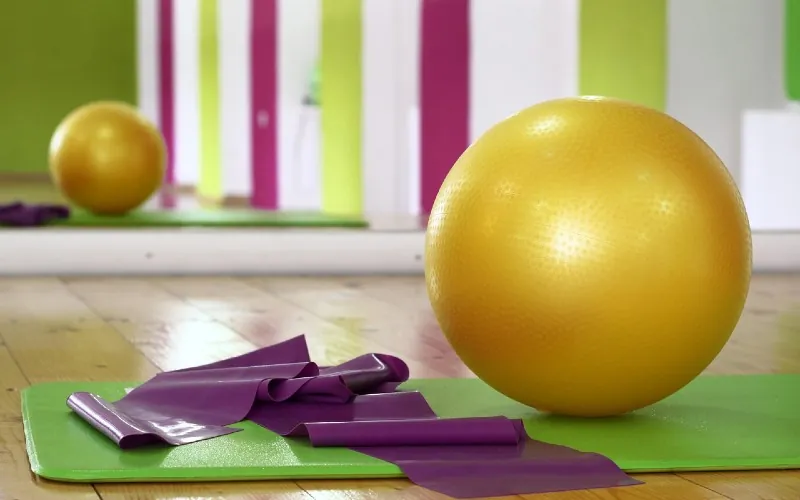For most people, yoga is about slowing down. You move, breathe, stay still, and try to feel your body. But what if a pose on the mat could also be a digital collectible? Something rare. Something expensive. Something other people could bid for and own.
That’s where NFT yoga comes in. It’s a strange idea — but it’s gaining traction. Imagine turning your body movement into data. Imagine that data turning into a unique digital item. One that could live on the blockchain forever. That’s what some early adopters are doing. It’s not so different from checking the complete history of big wins in a high-stakes game — only this time, the “win” is your flexibility, your breath control, your ability to hold a pose and prove it.
Let’s break down how this works, who’s already doing it, and why it might not be as weird as it sounds.
Yoga Already Has Rules. NFTs Just Make Them Digital.
Yoga isn’t freestyle movement. Every pose has a name. Every sequence has structure. If you follow Ashtanga, you repeat the same pattern every session. If you’re in Iyengar, alignment matters more than flow. These rules make yoga measurable.
That’s important. Because NFTs don’t care about how something looks. They care about proof. Dates. Details. Metadata. When you do a pose, hold it for a specific time, and capture the angles with your phone or a motion sensor, that’s trackable data. You can tokenize it. You can say, “This crow pose, held for 60 seconds, verified on X date, belongs to me.” That’s what the NFT is.
Some people mint a single pose. Others mint sequences. Some use it for access — a kind of key to private classes or coaching. Some just collect them like art. The point is: your body becomes a digital asset.
The Collector Side: Why Buy Someone Else’s Pose?
At first, it makes no sense. Why would you pay for a warrior pose?
But people buy stuff all the time for reasons that have nothing to do with use. It’s about story. About rarity. About being early. If a famous instructor mints a “handstand series” from their training archive, that’s a limited item. People will want it. Maybe for the content inside. Maybe for status. Maybe to resell it later.
And if you hold the NFT, you might get perks — early access to classes, voice feedback on your own form, or invites to live sessions. It’s like buying a VIP pass that also happens to live on a decentralized ledger.
For Teachers, It’s a New Business Model
Most yoga instructors don’t get rich. Even popular ones. They rely on Zoom classes, YouTube ads, affiliate links. Minting a sequence as an NFT lets them lock in value for their skills in a new way.
Instead of renting content to platforms, they own it. They sell it directly. They set limits on how many editions exist. They get royalties from resale. If someone buys a digital version of their backbend tutorial and resells it six months later, the teacher still earns a cut. That’s what smart contracts make possible.
It’s not just about more income. It’s about control.
The Technology Is Closer Than You Think
You don’t need a full motion-capture studio to do this. Many apps already use your phone’s camera to detect pose alignment. Tools like MoveNet or BlazePose can track body parts in real time. These systems can log angles, timing, and transitions. That’s enough data to generate a timestamped record.
Next step: link it to your crypto wallet, upload the stats, and mint it to a blockchain. Platforms like Zora, Manifold, or Foundation already let creators control how their NFTs are minted, displayed, and traded.
Is it frictionless yet? No. But it’s getting easier every month.
This Isn’t About Ego. It’s About Proof of Practice.
One of the most underrated parts of fitness — especially solo fitness — is that you rarely get credit for effort. You stretch. You sweat. You show up every day. But there’s no scoreboard. No log. No external validation.
NFT poses offer something new: proof of effort. Not in a show-off way. Just a quiet record of “I did this. I was here. This was mine.” It’s the same reason people track their workouts or journal their meals. Some want to see a path. A timeline. Something to look back on.
Now that timeline can live on-chain.

Real-World Projects Are Already Testing It
This isn’t just an idea floating around on Reddit.
A few startups and indie builders are already mixing blockchain with movement. Yoganotch, for example, uses wearable sensors to detect and correct pose form. The data is local, but the roadmap includes token-based milestones. STEPN, while more focused on walking and running, has already shown that people are willing to move in exchange for tokens. Expect yoga-focused spinoffs soon.
In some metaverse spaces, instructors are using POAPs (proof of attendance NFTs) to track who shows up to their virtual classes. These tokens can unlock future access, track loyalty, or simply serve as mementos.
Where This Is Going
It’s not going to replace in-person teaching. No one’s arguing that. But in the next few years, expect more hybrid models.
A student learns through video or VR. Their progress is recorded and stored. The best clips — the ones with perfect balance or controlled breathing — get minted as collectibles. They might be private. They might be shared. Either way, the student controls it.
Studios might start rewarding long-time students with pose NFTs as milestones. Wellness brands could partner with instructors to release themed collections. High-end apps could gate premium content behind owned poses.
That’s the shift. Yoga becomes not just something you do, but something you own.
Final Thought
Yoga was never about showing off. But it has always been about awareness — of the body, of the moment, of your presence in space.
NFT yoga isn’t about monetizing every breath. It’s about keeping a record. Owning your practice. Sharing your effort on your terms.
For some people, that’s going to be a gimmick. For others, it’ll be a game-changer.
And like every new tool, what matters most is what you do with it.


